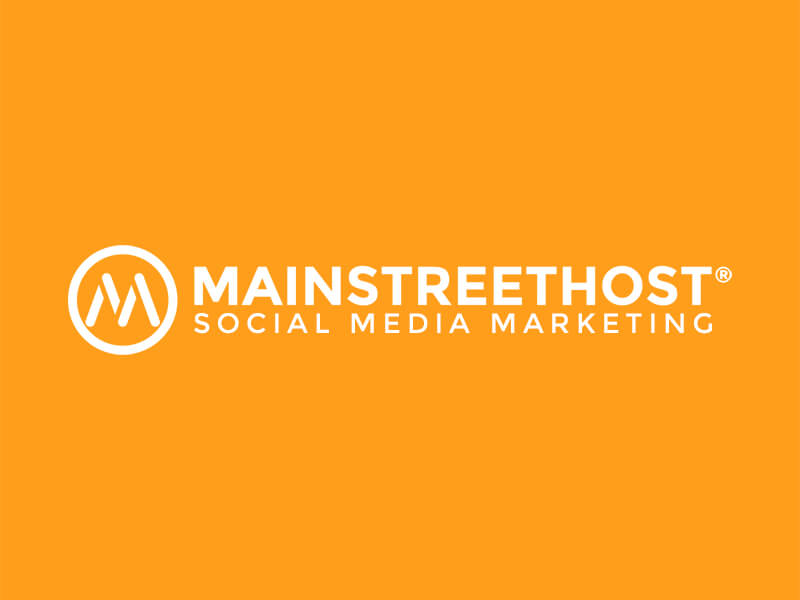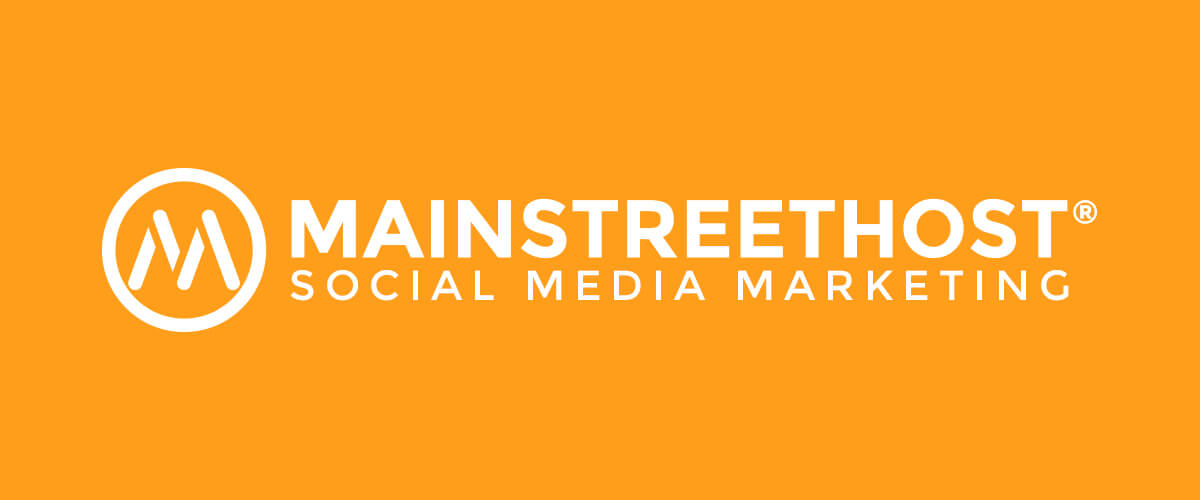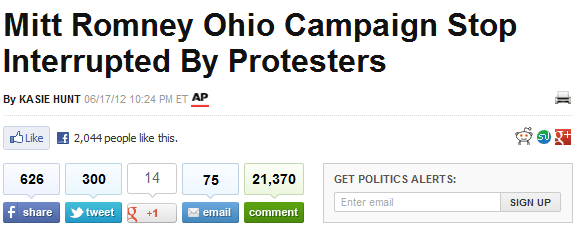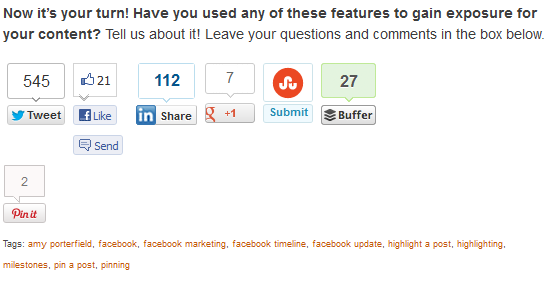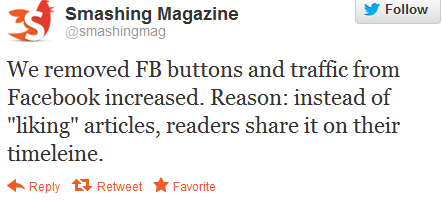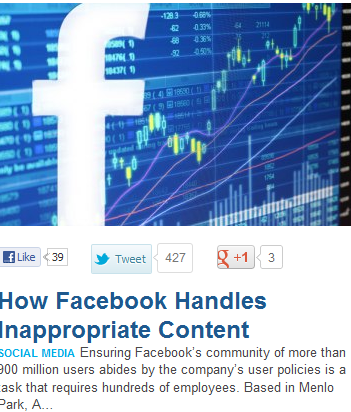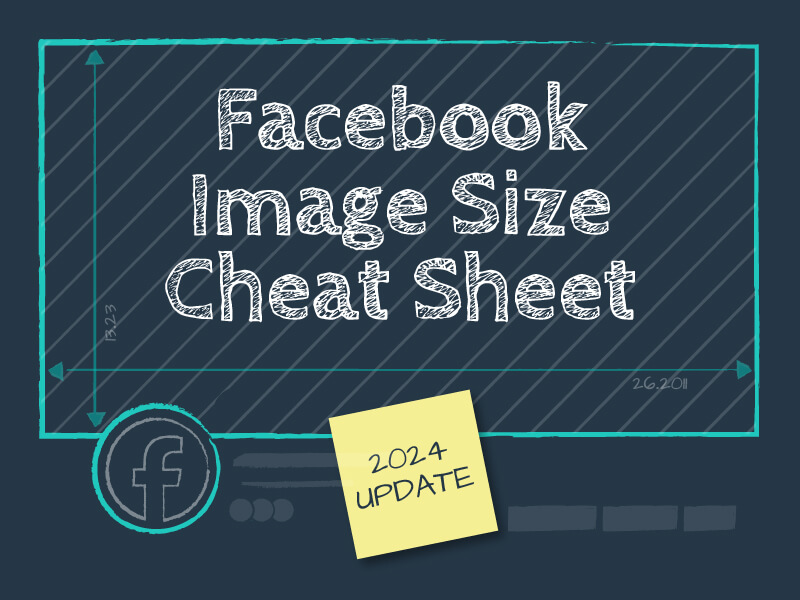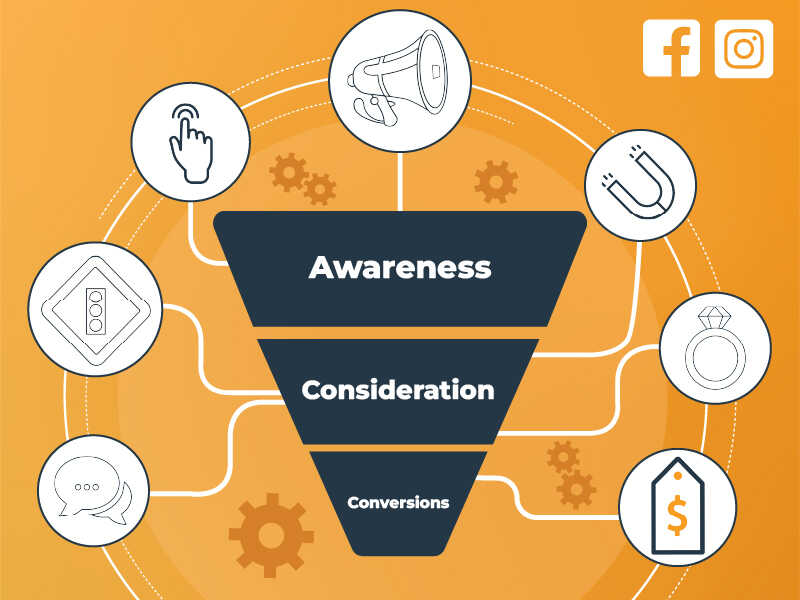It seems like an army of social sharing buttons have invaded the articles and blog posts on every website under the sun. I’ve read multiple times that these buttons generate engagement, but I wanted to do my own research to figure out whether they actually work. Does the Tweet button inspire people to tweet the link to an article? Does the Pin It button promote pinning? When I began my research for this blog post, I had no idea I would be investigating a topic about which many people have voiced different opinions. Who knew little buttons could spark such big debate?
Social Sharing Buttons Galore
Many websites have a plethora of social sharing buttons. Below are the buttons for an article on The Huffington Post.
Here are the buttons at the end of an article on Social Media Examiner.
If I want to share an article or a blog post on a social site, I have so many options, and all of these options come with a button: I can like it on Facebook, share it on Facebook, share it on LinkedIn, tweet it, Pin it, g+1 it, submit it to Stumble Upon, et cetera, et cetera, et cetera.
Looking at the images above, it looks like social sharing buttons work. People are using them. Over 600 people shared Huffington Post’s article on Facebook; 300 people tweeted the link to it. But, the numbers are all relative. If tens of thousands of people read this article, what are a few hundred tweets? What I’m getting at is that appearances can be deceiving. Various posts are equipped with an arsenal of sharing buttons, all of which are calls to action. But, do these social sharing buttons actually encourage sharing?
The Experts Weigh In
A large number of people have voiced their opinions about this hot topic, some in support of social sharing buttons, some against. Here is a breakdown of some of these arguments:
Buttons: They’re Overrated
- On the Information Architects blog, Oliver Reichenstein recently told people to “sweep the sleaze,” aka get rid of social sharing buttons and integrate tweets and Facebook posts into articles in a different way.
- According to Reichenstein, people arrive at content through social networks, so they don’t need to be reminded of them through buttons. Buttons are superfluous.
- He says the ways to build a profile are high-quality content, networking, and engagement, not through social sharing icon.
- Smashing Magazine made a case against buttons with this tweet:
- Nick Stamoulis wrote a blog post explaining what happened when he removed share buttons from his email newsletters. His blog posts received an unprecedented number of shares post-button removal.
Buttons: Don’t Blast Them! They’re Beneficial
- Joshua Benton of Nieman Journalism Lab looked at the effectiveness of the tweet button for a variety of sites.
- He found the percentage of tweets coming from the tweet button varies among sites, but tech sites (think: The Verge and TechCrunch) are less reliant on the Tweet button and sites with a clear ideological profile (think: Daily Kos and Red State) benefit most from the Tweet button.
- People are using the “Tweet” button, and getting rid of it would remove around 20% of Twitter link mentions for most news organizations.
- Martin Belam looked at analytics from the Guardian and says that share buttons are an effective visual cue to share. The effectiveness varies depending on where the buttons are positioned on the page, but they work.
- Jeff Sonderman says share buttons can be valuable for social proof: when people see that others have liked and shared a post, they will too.
Where Does This Leave Us?
All of these arguments are compelling and interesting, so what’s the bottom line when it comes to buttons? Is wiping them out wise? Or, do social sharing cues need to stick around? I personally have never used a social sharing button on a website. I do like things on Facebook, but I like them when they show up on my news feed.
Consider this example: I read an interesting article on Thought Catalog. After I read this, these are some the thoughts that go through my head: “That was incredibly well-written.” “I’m really impressed.” “I need to start checking Thought Catalog more often.” “I’m adding ‘get something published on Thought Catalog’ to my list of life goals.” If I’m on Thought Catalog, I’m thinking only about Thought Catalog. I’m not thinking about Facebook. I’m sure a lot of people read something interesting and think, “I should click the Facebook Share button so all my friends can read this!” I, however, do not. And, when I tweet something, I actually copy and paste the URL (gasp!). Why do I expend extra energy with multiple mouse clicks when I can simply click on a Tweet button? Consider another example: say I want to tweet a link to this article from Mashable:
When I click the tweet button, this is what shows up:
I would not send this tweet out because it’s very generic and formulaic. If I tweet a link to an article, I do so because I think it’s worth reading. If I came across the above tweet, would I be compelled to click the link? Most likely not, so why would I expect anyone else click it? If I want to encourage people to read a thought-provoking, intriguing, high-quality article or blog post, I would send out a tweet that has some personal commentary. Something like this:
Social Sharing Buttons Survive
I might be an anomaly. Looking at the social share buttons, which boast a large number of likes and tweets, on any major site, it seems that I am. And even though I might be an argument for the case against social sharing buttons, I think eradicating them is premature. While Oliver Reichenstein’s blog post is very interesting and compelling, it’s not scientific. Joshua Benton and Martin Belam (who had access to concrete data) prove that people do use them. And I think they can be beneficial, as social proof is a well-documented phenomenon. Social sharing buttons are hard to ignore (especially when they’re placed above the body of an article). I know I’ve seen buttons like this:
and thought, “Wow! 864 tweets! This must be pretty interesting.”
Social sharing buttons might be the social media version of peer pressure, but until a convincing scientific argument comes out against them, they survive another day.

